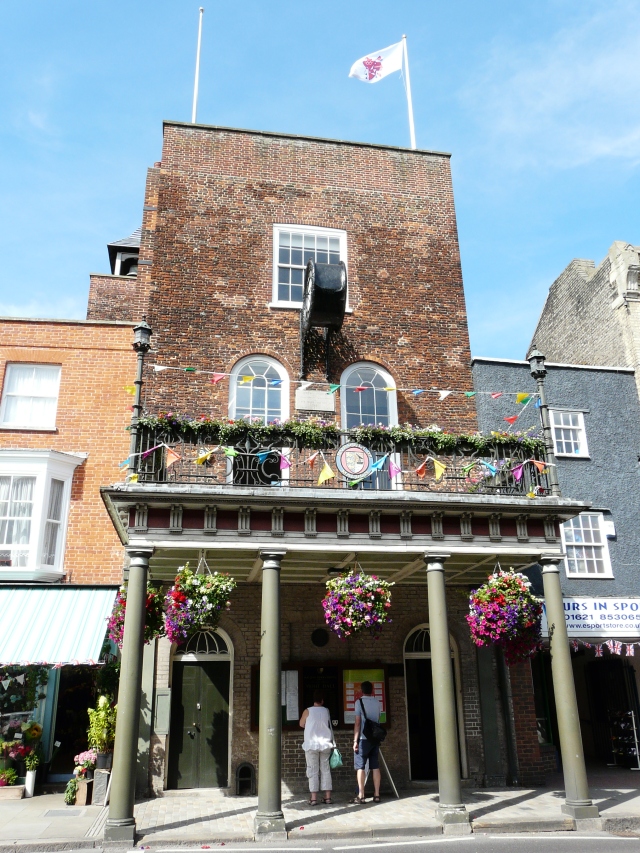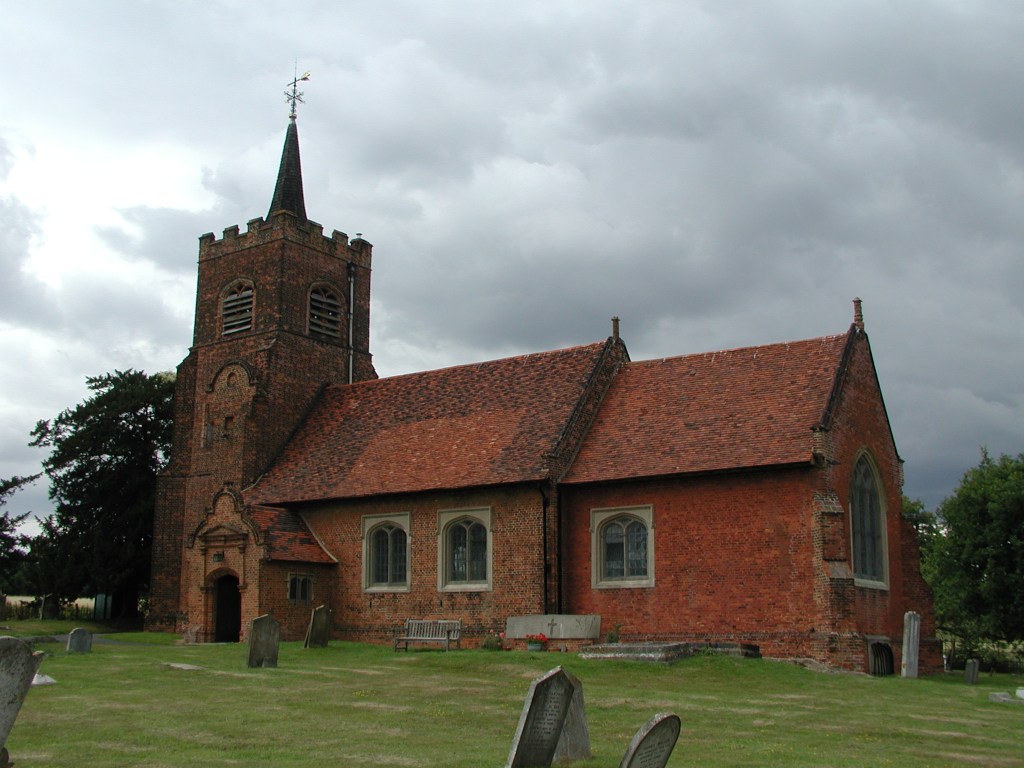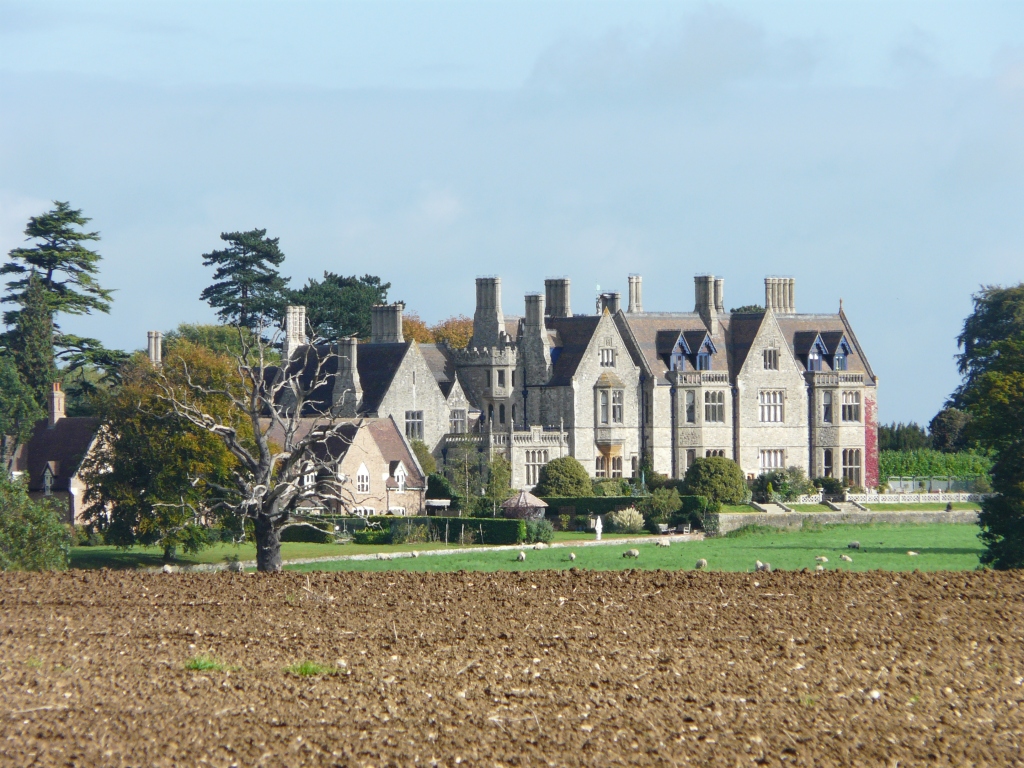Above the four five-sheriff families we have, first, the Buxtons, Darcys and Smiths with six apiece. The oldest family in this group bears the well-known Essex name of Darcy, who claimed descent from one of the Norman knights who came over at the Conquest and by the 16th century had split into four main branches, at Danbury, Maldon, Tolleshunt D’Arcy (obviously, although it was also known as Tolleshunt Tregoz after a previous lord of the manor), and St Osyth. The last of these became the dominant one, but died out with death of the 3rd Lord Darcy in 1639. The first member of the family to be sheriff was Sir Robert (1419–20) of Maldon and Danbury, builder of Maldon’s Moot Hall; his son Robert was sheriff in 1458–9, the latter’s grandson Roger in 1505–6. Roger was the father of Sir Thomas, created Baron Darcy of Chich in 1551, to whom St Osyth’s Priory was granted in 1553. At Tolleshunt D’Arcy, Anthony was sheriff in 1511–12 and his grandson Thomas in 1581; the latter’s half-brother Brian (of St Osyth and Tiptree) was sheriff in 1585–6.

Both the Buxtons and the Smiths had been associated with Essex since at least the mid-16th century. The Buxtons were connected by marriage with the Paycockes of Coggeshall, and the first of their sheriffs was Thomas Fowell Buxton of Earls Colne (1789–90), who in 1782 had married into the brewing Hanbury family (which also supplied Osgood Hanbury, of Holfield Grange, Coggeshall, in 1858). We then jump to 1888, and the appointment of Edward North Buxton, of Knighton, Woodford, a distinguished verderer of Epping Forest who was instrumental in its preservation. His grandson, also Edward North Buxton, was also a verderer, and High Sheriff in 1934–5. Meanwhile his brother Sir (Thomas) Fowell Buxton, 3rd Bt, of Woodredon, Waltham Abbey, also a verderer, was High Sheriff in 1905–6, and the 5th Bt, also Sir Thomas Fowell, of Woodredon, Waltham Abbey, was appointed in 1928. Another member of the same family, Wing-Commander Denis Alfred Jex Buxton, of Wilderness House, Ongar, was High Sheriff in 1944–5.


As far as the Smiths are concerned, for present purposes we had better confine ourselves to those associated with Theydon Mount and Hill Hall. Hill Hall was the house built by the most remarkable member of the family, Sir Thomas Smith (1513–1577), who was, amongst other things, Queen Elizabeth’s ambassador to France. His nephew Sir William Smith succeeded him, and was High Sheriff in 1615–16 and again in 1619–20; he was responsible for rebuilding the parish church 1611–14. Sir William’s second son, Thomas, was High Sheriff in 1663–4, having been created baronet in 1661. His son the 2nd baronet, Sir Edward Smyth, held the office in 1680–1, and his grandson the 5th baronet, Sir Charles, in 1761–2. By the time of 12th baronet, Sir William, the surname had evolved to Bowyer-Smijth; he was High Sheriff in 1889–90.

Then we have two families with seven and eight sheriffs apiece, the Mildmays and the Goslings respectively. The Mildmay family can be traced back to the middle of the 15th century, and quickly rose to prominence in the 16th. Thomas Mildmay, who was sheriff in 1558–9, owned most of Moulsham and Chelmsford by the time of his death in 1566; in 1540 he had bought the important manor of Moulsham, which had belonged to Westminster Abbey, for £620. He was elected to parliament for various Cornish seats six times between 1547 and 1559. His son Sir Thomas was sheriff in 1572–3, his son, also Sir Thomas, in 1609–10 (elected MP for Maldon in 1593). This Thomas was created baronet in 1611, but the title died with him in 1626. A collateral descendant, William Mildmay, was sheriff in 1765–6, and created baronet in 1765, but he too had no one to inherit his title when he died in 1771. Other branches of the family provided sheriffs in the shape of Humphrey Mildmay of Danbury in 1593–4, Sir Humphrey of Danbury in 1635–6, and Sir Henry Mildmay of Graces, Little Baddow, in 1628–9.

The Goslings, on the other hand, do not appear in Essex until the 18th century. The family had been bankers since 1742 (the firm, known as Goslings & Sharpe, was one of the twenty banks that joined together in 1896 to form Barclay & Co.), and in 1773 purchased the Hassobury estate at Farnham, which they had leased since 1746. They rebuilt the parish church in 1858–9, and the house in 1866–70: just in time for Robert Gosling to be sheriff in 1871. In 1902, his son Robert Cunliffe Gosling was High Sheriff; he is better remembered as a footballer who played for England and captained the team on at least one occasion. He was described then as ‘the richest man who ever played football for England’, a distinction that probably no longer applies. His younger brother William Sullivan Gosling, High Sheriff in 1927, was also a footballer, and played for Upton Park, winning a gold medal in the 1900 Olympic Games (only three teams competed, and only two matches were played). More recent Gosling sheriffs were Lt-Col William Douglas Gosling (1958–9), Col Richard Bennett Gosling (1982–3), Christopher Spencer Gosling (1993–4), Sarah Francesca Courage (née Gosling, 2008–9) and Rupert Seymour Gosling (2009–10).

[Many of the individuals mentioned here will be found in Essex Worthies: a biographical companion to the county by William Addison (1973).]

The Smith family need further investigation. In his account of his year in office, 1915-16, Sir Drummond Cunliffe Smith of Suttons, Romford, stated that ‘7 of my family and relations have been High Sheriffs of Essex’ (Essex Record Office, S/U 6/1).
LikeLike
To the list of Buxtons it is necessary to add Andrew Johnston, High Sheriff 1880–1, who was the great-grandson of Thomas Fowell Buxton, High Sheriff 1789–90, and used his sword (ERO, S/U/6/1, p 106).
LikeLike